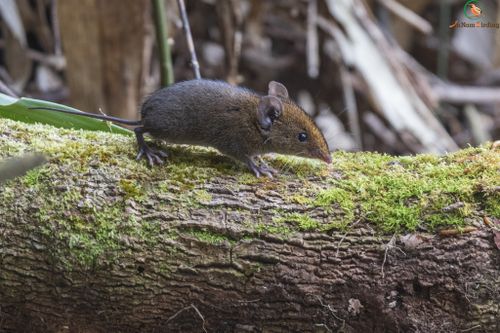If you cannot find the answer you are looking for, please contact us.
Shrew gymnure

First described in 1909, the Shrew Gymnure is the only living species in its genus and inhabits cool, damp montane forests in parts of southern China, Myanmar, and northern Vietnam.
Taxonomy
| Kingdom: | Animalia |
| Phylum: | Chordata |
| Class: | Mammalia |
| Order: | Eulipotyphla |
| Family: | Erinaceidae |
| Subfamily: | Galericinae |
| Genus: | Neotetracus |
| Species: | Neotetracus sinensis |
Not a ‘real’ hedgehog
Though it belongs to the same family as hedgehogs, the Shrew Gymnure is part of the gymnures, hairy hedgehogs, not the true, spiny hedgehogs. It shares traits like nocturnal foraging and a strong sense of smell, yet it lacks spines, cannot curl into a defensive ball, and is covered in soft, dense fur. Its elongated snout and stealthy shrew-like body clearly distinguish it from its spiky cousins, while still reflecting their shared evolutionary heritage.
Natural range & habitat
The Shrew Gymnure is found in subtropical montane forests ranging from approximately 300 to 2,700 meters in elevation. It prefers habitats with cool, moist conditions and dense ground cover, often sheltering beneath logs, rocks, moss, or shaded undergrowth.
Physical traits
It has a soft, dense coat that can be olive-brown, cinnamon-brown, or a mix of cream and black, with a belly that ranges from cream to grey or red. Some individuals show red tinges along the neck and head, and a faint dorsal stripe may be visible. Compared to others in its family, it features a relatively long tail, shorter snout, and fewer teeth.
Behavior & lifestyle
This species is strictly terrestrial and nocturnal, carving small runways through forest litter and hidden paths under logs or rocks. It nests in burrows concealed by moss and ferns and exhibits year-round breeding, potentially producing up to two litters annually.
Communication
Direct observations on communication in the Shrew Gymnure are lacking, but its relatives offer some clues. It likely relies on olfactory cues, using scent to mark territory or signal reproductive status. Tactile contact may play a role during nesting or parental care, and soft vocalizations could help maintain contact in dense forest undergrowth. Like other gymnures, it depends more on smell and touch than on vision or loud calls, allowing it to remain hidden while navigating its nocturnal world.
Diet in the wild
Its diet mostly consists of invertebrates such as insects, earthworms, and other small forest-floor creatures.
Reproduction & life cycle
Breeding likely occurs throughout the year with the possibility of two litters per season, as suggested by capture records and behavior patterns.
Threats & conservation status
The IUCN lists the Shrew Gymnure as Least Concern due to its relatively wide, but fragmented, distribution. While not currently under severe threat, habitat loss could pose long-term risks.
This species in captivity
There are no known records of this species being kept in captivity. Its elusive nature, specific ecological needs, and specialized habitat make it a poor candidate for captive care or display.
